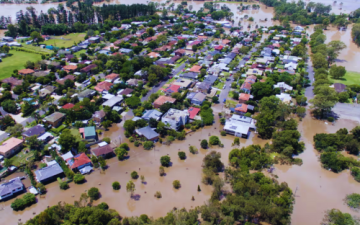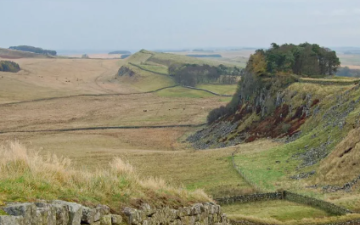Enhancing climate resilience and effectively managing risk in today’s volatile risk landscape poses significant challenges for insurers and businesses alike. Hail is one of the least understood perils for both insurers and scientists due to a lack of long term reliable observations and a deep understanding of the physical process of hail formation and growth, leading to difficulties in modeling the risk.
Understanding hail exposure is becoming increasingly crucial for U.S. insurers and stakeholders in sectors susceptible to severe storm events, particularly as these events consistently rank among the costliest perils.
The integration of artificial intelligence (AI) into hail risk modeling, however, is equipping insurers such as Descartes Underwriting with the necessary tools to adapt and provide coverage in regions where many traditional carriers have withdrawn due to escalating losses and inadequate peril modeling.
Vincent Forcadell, an R&D Data Scientist at Descartes and a Ph.D. Candidate at Météo France, is actively engaged in AI-driven research focused on hail. His efforts aim to expand the understanding of hail climatology and refine risk modeling methodologies at Descartes.
How does AI improve our understanding of hail?
"AI can be used to establish a relationship between weather data (numerical weather prediction model, satellite, radar) and ground observations of hail,” Vincent explained.
“In most instances, ground observations of hail represent our primary source of information. However, due to their scarcity and bias towards highly populated areas, relying solely on them does not give us the full story regarding the frequency of hail events, particularly in areas where hail cannot be reported. Leveraging other data sources to “fill the holes'' where hail observations are scarce is key for a broader and better hail frequency assessment. Due to the complex relationship between the small-scale processes involved in the formation of hail, storm dynamics and hail damage on the ground, finding a direct relationship between weather data such as numerical weather prediction (NWP), satellite or radar with ground observations of hail remains challenging.”
“AI, with its ability to model complex and nonlinear relationships, can help us to bridge this gap in understanding and estimating the location, size, and severity of hail events.”
With an improved understanding of the relationship between weather data and ground observations of hail facilitated by an AI-driven model, it becomes conceivable to retrospectively analyze and reconstruct historical hail events.
How can AI be used to produce what happened during past hail events?
Vincent describes the pivotal role that AI can play in recreating past hail events, a focal point of his research with far-reaching implications for enhanced risk modeling at Descartes.
“One important application of AI in hail research is the development of hail climatologies. By establishing a precise relationship between radar data and ground observations of hail, our AI-based model can harness previous years’ radar data and compile a database of historical hail events. This allows us to deepen our understanding on the geographical distribution of hail frequency and the intensity of hail events with a high spatio-temporal resolution.
“This research extends beyond scientific inquiry, addressing a peril often overlooked and poorly understood in climate science and holding implications for refining risk modeling, as historical events play a large role in risk assessment.”
The lack of ground observations in most locations highlights the necessity for supplementary data sources. Nevertheless, data such as radar data must be processed in order to provide insight into the study of hail risk.
Why is radar data alone insufficient in providing the size, severity, and precise location of hail events?
“Radar technology, referring here to Doppler weather surveillance radar, is a technology that was deployed to locate and estimate precipitation in real-time. Despite advances in processing tools and hardware that give us more variables related to hail, radar technology does not directly detect hail in the atmosphere or near the ground. Therefore, advanced post-processing techniques and algorithms are required to extract the relevant hail information embedded in the radar data.
With the integration of our AI-based model, radar data can be leveraged, along with ground observations of hail, to provide a more accurate and detailed assessment of hail occurrence and severity on the ground. Especially in the United States where high-resolution radar data is available for many years, this approach holds higher potential for more comprehensive analysis and risk modeling of hail.”
What are the potential implications of your research?
“As explained before, with better hail detection we can significantly advance hail climatology by using past radar data to produce a historical database of hail events, offering an enhanced assessment of hail frequency within vast geographies. This has implications for improved climate risk modeling, particularly in the hazard modeling that we do at Descartes.”
A deeper understanding of historical events allows Descartes to produce stochastic simulations that are able to generate realistic hail events and take into account potential effects of climate change on the risk. This facilitates more accurate risk assessment and pricing of risk for our clients. Rather than relying just on claims history, Descartes captures trends and the impact of climate change to better protect businesses and governments around the world.
Vincent explains that “additional implications within insurance discerns that with greater precision in detecting the severity and location of hail events, we would be able to pinpoint more precisely when, where, and with what severity an insured location experienced a hail storm, allowing for a more accurate estimation of potential losses. This is crucial for hail parametric covers developed at Descartes, where rapid and swift payments are key for the recovery of impacted businesses. We can determine the severity of the hail that affected a client within five minutes following a hail storm and trigger their payout based on the predetermined parameters, without the need for on-site claim adjusters.”
What are the limitations with current hail risk models?
“Traditional approaches often fall short in accurately assessing hail risks due to several factors. Firstly, risk models based on ground observations of hail and its damage exhibit significant biases towards densely populated areas. This skewed focus can lead to an incomplete understanding of hail frequency, particularly in regions with sparse population density.”
“Secondly, hail risk models based on numerical weather prediction outputs encounter challenges with the resolution of the data being too coarse to capture local hail events reliably. Additionally, these models rely on variables that serve as distant proxies for hail, such as temperature, wind, and humidity. While these variables may be correlated with hail occurrence to some extent, they do not directly measure hail activity in the atmosphere, hampering their skill to assess the severity of hail on the ground.”
Why is it difficult to build a scientific consensus regarding the influence of climate change on hail risk?
The current difficulty to build a scientific consensus on the effects of climate change on hail risk stems from the complexity of physical processes involved in hail formation to be modeled, the lack of dense and long-term hail observations and the limitations of current methodologies to detect potential trends. While some studies showed evidence suggesting a positive trend in hail severity associated with climate change, both in the US and in Europe, elucidating this relationship may require further research.
Vincent answered that, “Demonstrating a trend in hail frequency and severity due to climate change necessitates a precise assessment of where hail events have occurred, along with their size, severity, and intensity. A good hail detection technique applied both to historical data and real-time data will facilitate the detection of the changes in hail frequency and enhance our understanding on the attribution of such changes to the effects of global warming.”
“Fortunately, we're witnessing progress in this direction, particularly with the aid of AI, which helps to find the intricate relations between weather data and ground observations of hail. However, despite these advancements, obtaining conclusive insights into the impact of climate change on hail may still require additional time and advancements in the technologies, the algorithms and the quantity of hail observations. As technology continues to evolve, and high-resolution datasets are growing in size, it's foreseeable that we'll gain better insights into the complex relationship between climate change and hail frequency in the upcoming future.”





